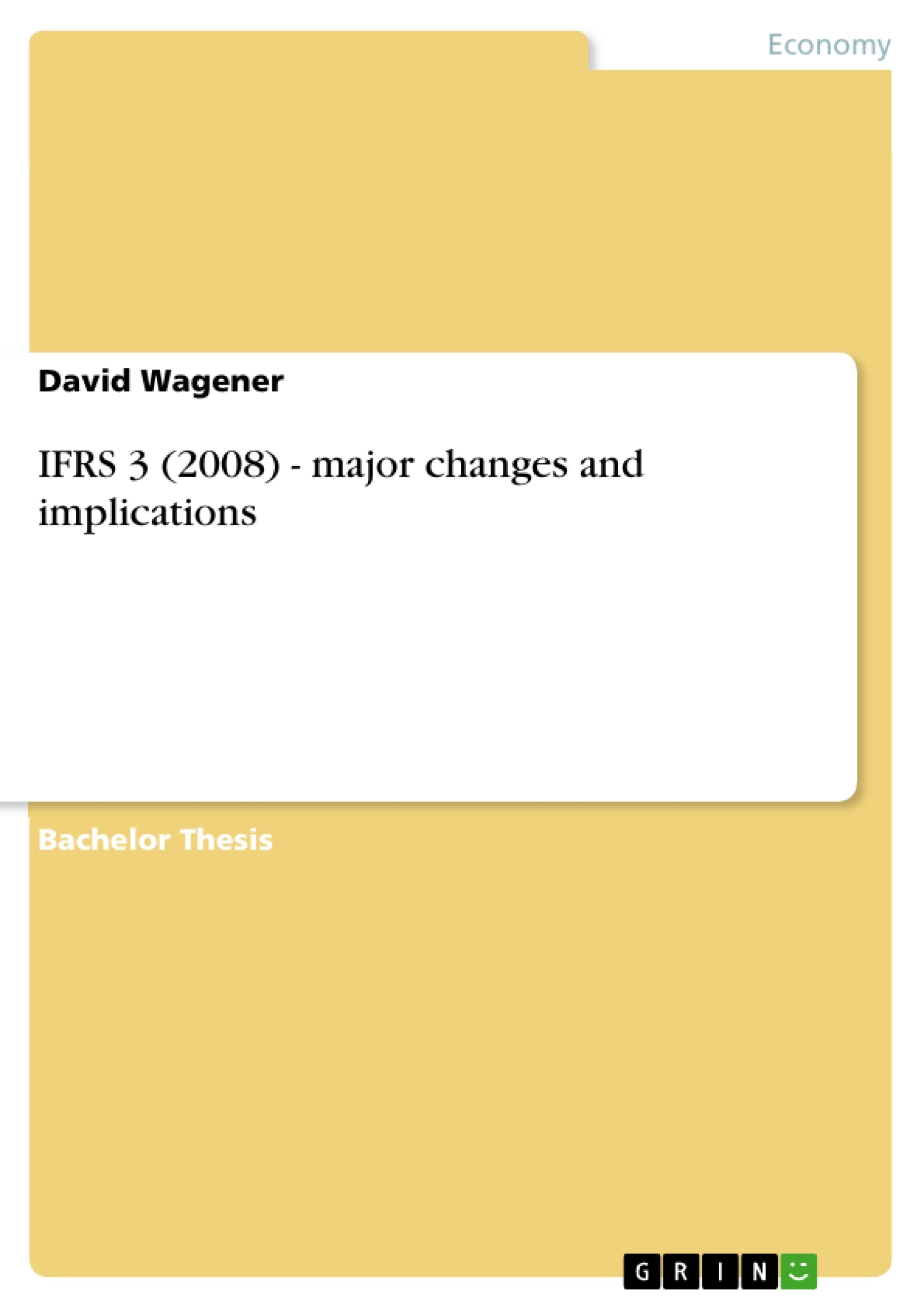This report explains the major changes which companies have to face with the revised IFRS 3 which was published in January 2008. One of them is the introduction of an option when it comes to the recognition of minority interest. The acquiring companies may chose between measuring it with its fair value or, as in the previous version of the standard, with its proportionate share of the net assets of the acquiree. Comparing the two treatments it becomes obvious that only the fair value measurement leads to the recognition of the part of goodwill which is attributable to the minority interest. This causes lower returns on capital employed and higher equity ratios for firms applying the fair value treatment.
Another important modification of the revised IFRS 3 is that acquisition related cost such as legal or adviser fees have to be expensed, which means a cut in profits in the year of the acquisition. Before, those costs have been capitalised with the investment.
When it comes to business combinations achieved in stages the revised standard demands that any previously held investment has to be re-measured at its fair value. Any differences to the carrying amount have to be realized as gains or losses. Goodwill is subsequently measured as the excess of the consideration transferred, the value of the re-measured investment and any minority interest over the identifiable net assets of the acquiree.
Inhaltsverzeichnis (Table of Contents)
- Introduction
- Major changes and implications
- Treatment of minority interest and goodwill
- Recognition of incidental acquisition costs
- Accounting for pre-existing relationships
- Business combinations accomplished in stages
- Contingent considerations
- Reacquired rights
- Information sources used
- Conclusion and outlook
- References
Zielsetzung und Themenschwerpunkte (Objectives and Key Themes)
This report aims to explain the major changes introduced by the revised IFRS 3, published in January 2008. It specifically focuses on the implications for companies applying the new standard.- Treatment of minority interest and goodwill
- Recognition of acquisition-related costs
- Accounting for pre-existing relationships in business combinations
- Accounting for business combinations achieved in stages
- Recognition and measurement of contingent considerations and reacquired rights
Zusammenfassung der Kapitel (Chapter Summaries)
- Introduction: This chapter provides a general overview of the report's purpose and the key changes introduced by the revised IFRS 3.
- Major changes and implications: This chapter delves into the specific changes introduced by the revised IFRS 3. It discusses the following key areas:
- Treatment of minority interest and goodwill: This section analyzes the new option provided for recognizing minority interest, comparing the fair value method with the proportionate share of net assets method. It also explores the implications of fair value measurement on goodwill and financial ratios.
- Recognition of incidental acquisition costs: This section examines the revised standard's requirement to expense acquisition-related costs, contrasting this with the previous capitalization approach.
- Accounting for pre-existing relationships: This section highlights the impact of the revised IFRS 3 on business combinations involving pre-existing relationships.
- Business combinations accomplished in stages: This section details the re-measurement requirements for previously held investments and the subsequent determination of goodwill in stage acquisitions.
- Contingent considerations: This section explains the revised recognition and measurement rules for contingent considerations, focusing on the impact of fair value changes on the profit and loss account.
- Reacquired rights: This section discusses the recognition and amortization of reacquired rights as intangible assets with a finite useful life.
- Information sources used: This chapter outlines the sources used for the information and analysis presented in the report.
Schlüsselwörter (Keywords)
This report focuses on the impact of the revised IFRS 3, covering key concepts like minority interest, goodwill, acquisition-related costs, business combinations, contingent considerations, reacquired rights, and fair value measurement. The report also highlights the importance of international financial reporting convergence.- Quote paper
- David Wagener (Author), 2008, IFRS 3 (2008) - major changes and implications, Munich, GRIN Verlag, https://www.grin.com/document/113428



